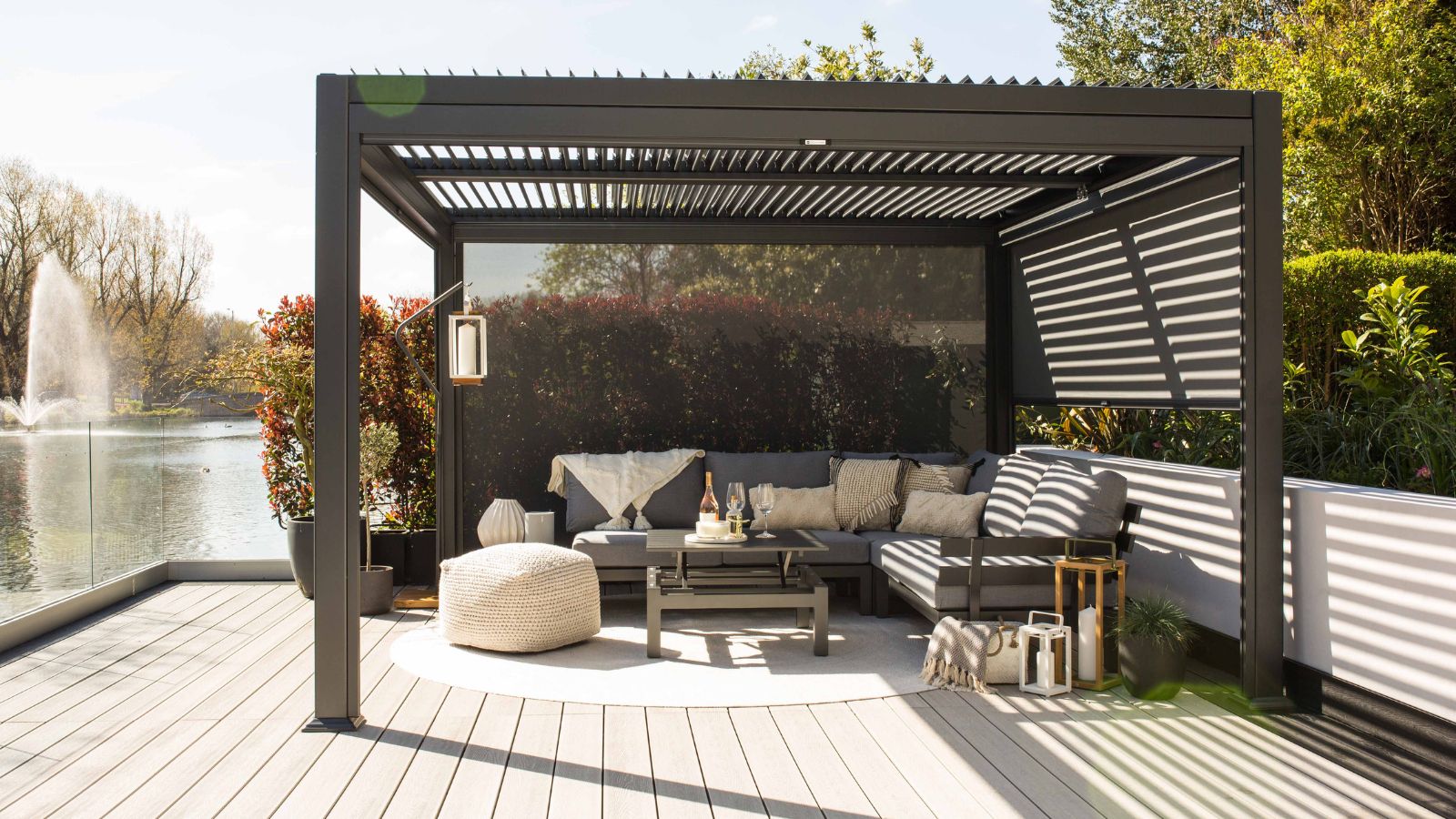Living rooms with large windows are wonderful to spend time in — but they do need a considered approach
Be inspired by our collection of living rooms with large windows, all of which showcase how to style this kind of space
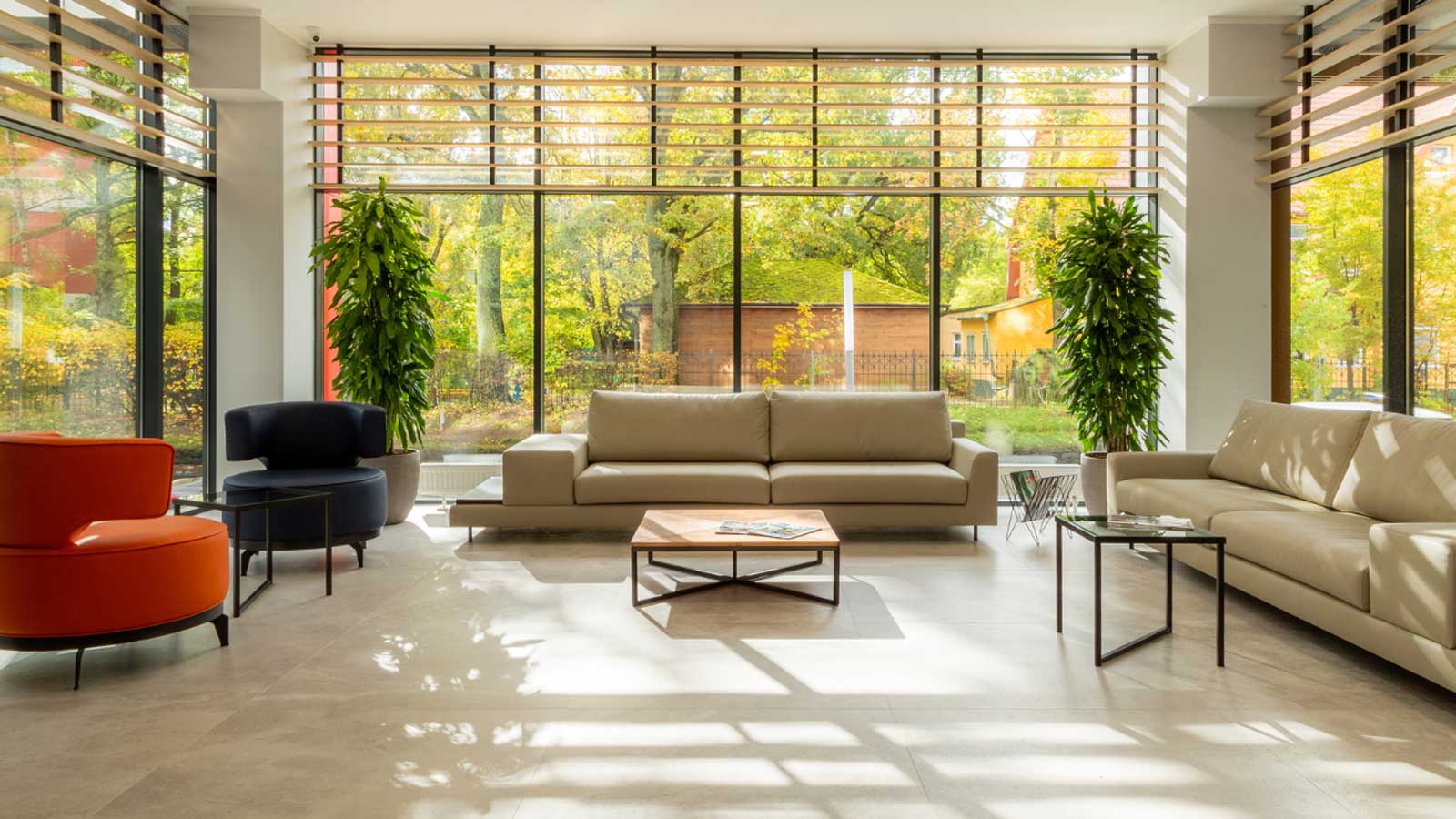
Living rooms with large windows come with so many benefits – an increased sense of wellbeing when spending time in them, the opportunity to highlight details and finishes and greater versatility in terms of how the space can be used.
"Home improvement projects should increase the appeal of living room ideas, and one of the first things that should be considered is natural light,” says Edward Stobart, IDSystems’ technical sales manager. “Taking a daylight-first approach to a project makes a massive difference to the quality of the final result. Walking into a space that is designed to prioritise natural light quite literally feels like a breath of fresh air – it never fails to lift my mood.”
That said, there are a couple of things to bear in mind when incorporating large expanses of glazing, not least the risk of overheating. Take a look at our round-up of stunning ideas which show how to maximise light without sacrificing privacy or comfort levels.

A long serving member of the IDSystems team, for the past 20 years Edward has advised and supported self-builders and renovators to identify the most suitable glazing options for their project. He has recently finished a complete renovation and remodel of his own home, transforming a tired 1960s house into a stylish modern family home.. His expertise ensures that each project is equipped with cutting-edge, bespoke glazing designs that enhance both functionality and aesthetics.
The pros and cons of living rooms with large windows
While the idea of a living room with huge swathes of glazing and uninterrupted views is undoubtedly appealing, it is important to recognise that there are some issues that come with all this glass.
When choosing windows, bear in mind their orientation. While large window ideas are the perfect way to pull in lots of sunlight, too much could cause overheating at certain times of the year and won't always be welcome. There is also the matter of privacy to take into account.
There are lots of steps you can take to avoid these issues though, from using the right window dressings to incorporating overhangs or shading externally.
1. Keep frames slimline to frame a view
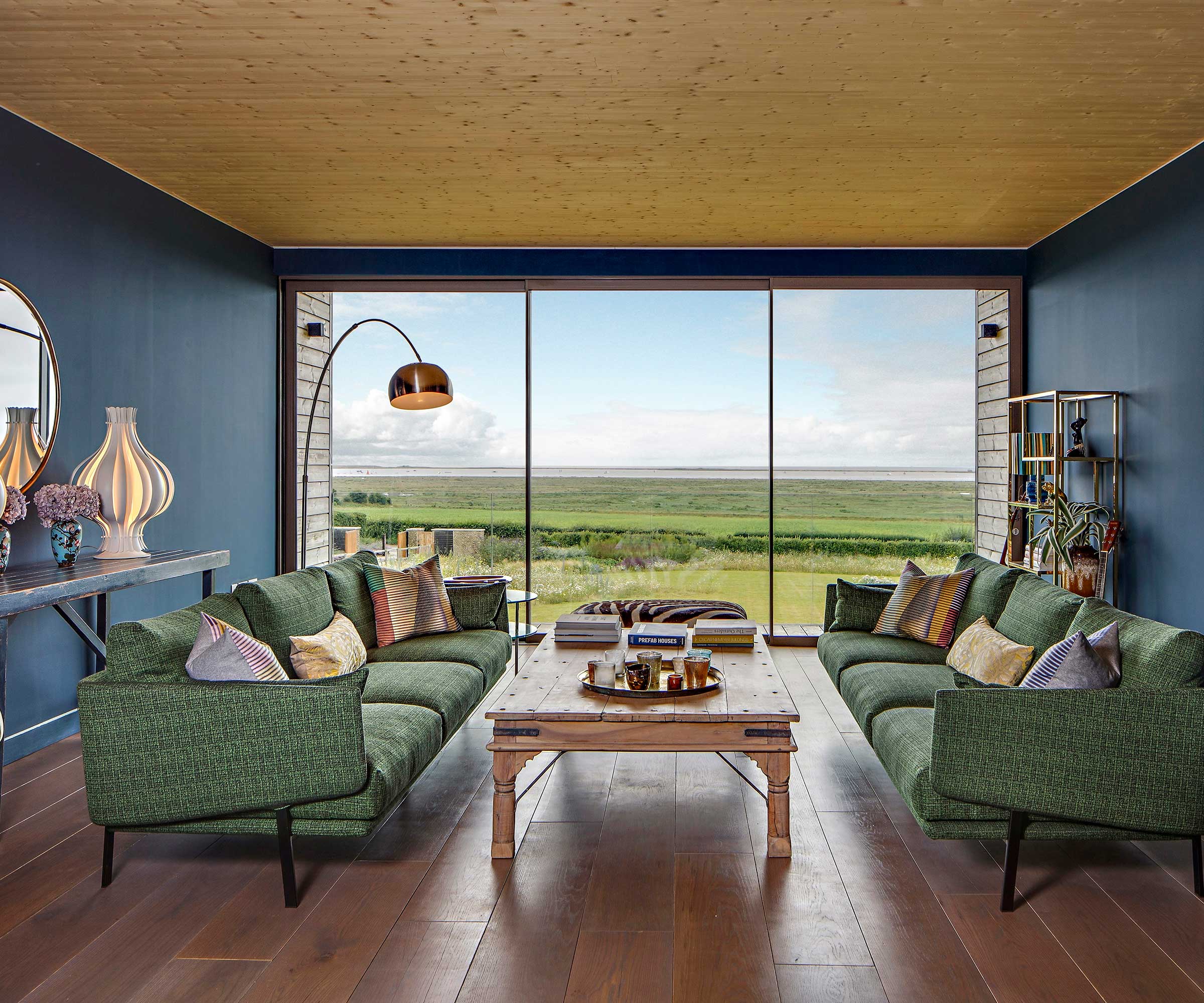
If you have a great view from your living room, then you need to look into the types of windows that will make the most of this – and then position them accordingly. Ideally, you also want to keep frames as slimline as possible.
"Aluminium windows tend to be ideal because they are able to combine big panes of glass with minimal visible frames," picks up Edward Stobart.
“Beyond that, square-edged window profiles in a colour that contrasts to the internal decor are ideal because they provide a clear border between inside and out and keep eyes on the view, not on the window itself.”
2. Dress a large bay window with care
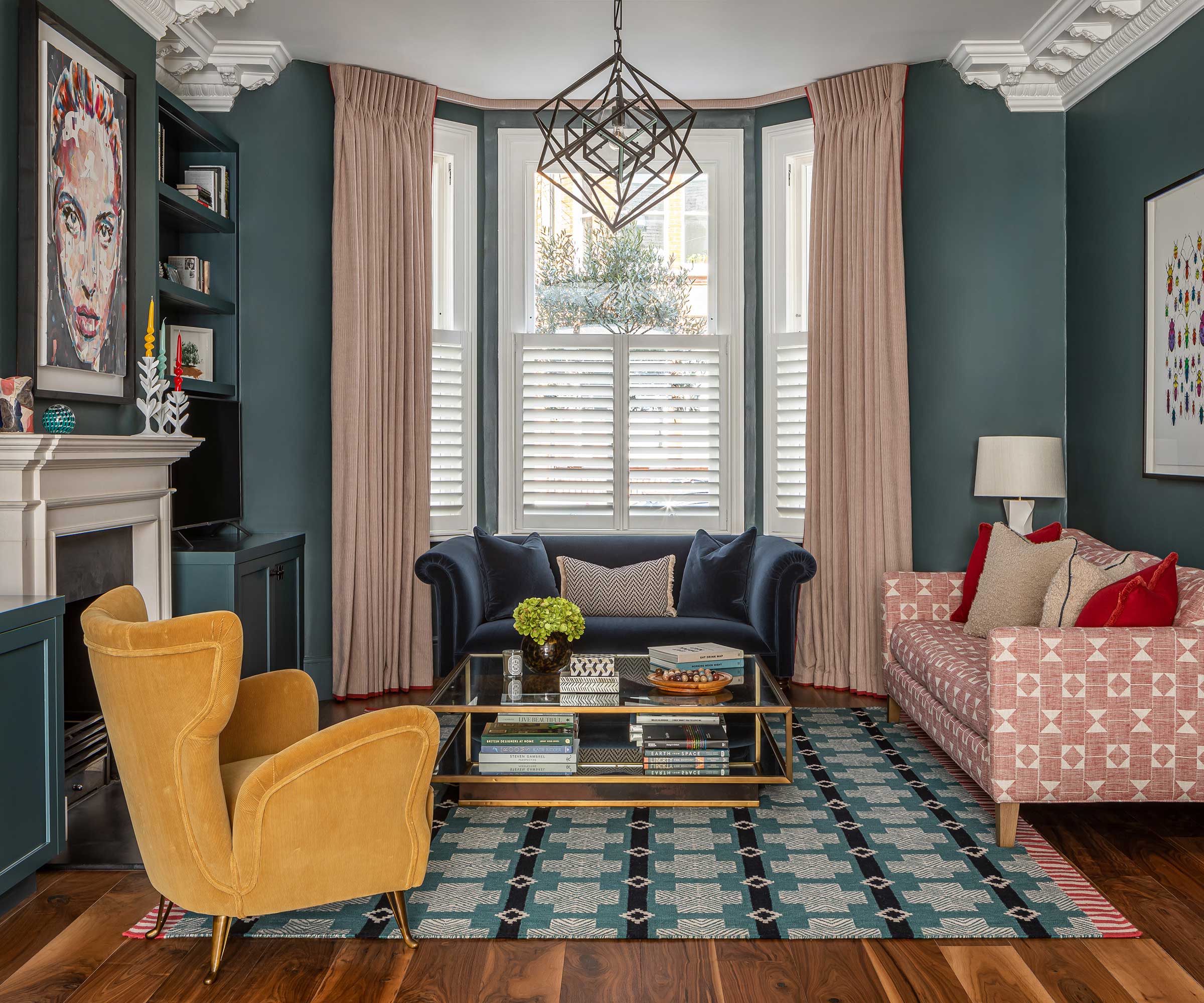
Bay windows not only make striking architectural features, they also draw daylight in from multiple directions, creating some really interesting interplays of light. That said, thought needs to go into how you will maintain privacy with any bay window ideas.
"Large windows are a stunning feature in any living room, flooding the space with natural light and creating a seamless connection to the outdoors," says Debbie Leigh, design manager at ILIV. "To make the most of them, think about the balance between making the most of the light and maintaining comfort and privacy."
In this living room, shutters take care of the privacy side of things, while luxurious full-length curtains add warmth to the space.

Debbie has over 30 years of experience in the trade and is considered an expert in creating beautifully coordinated fabric collections that can be easily combined to create harmonious interior schemes.
3. Take steps to prevent overheating
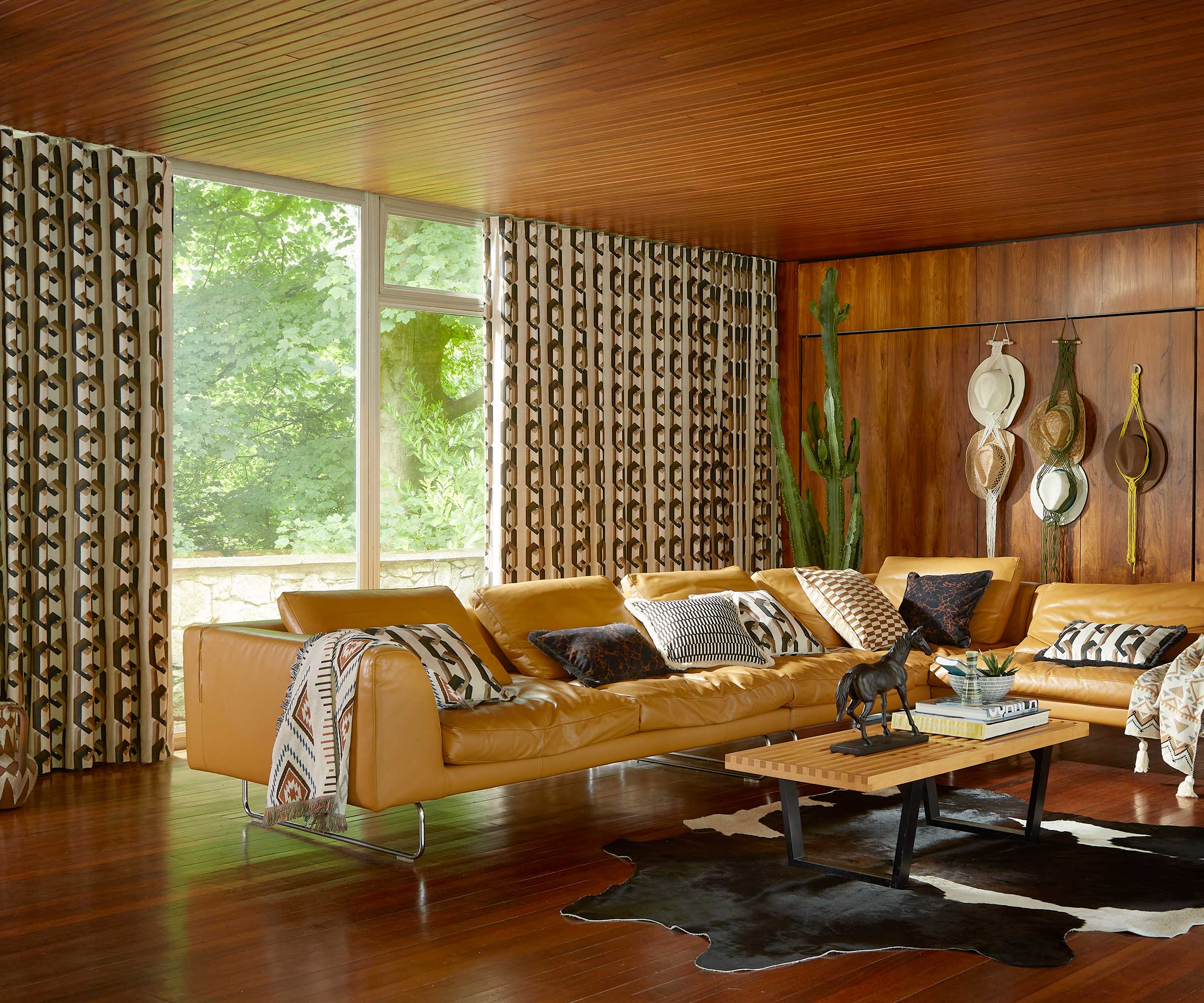
Depending on the orientation of your windows, lots of glazing can mean lots of sunlight – which in many ways is a good thing. Except, it can also result in a stuffy, hot environment internally. There are several ways to prevent overheating in homes.
"Using double and triple glazing is essential to prevent heat loss in winter and overheating in summer,” advises Edward Stobart. “These glazing options offer excellent insulation properties, ensuring homes remain comfortable year-round without compromising on the benefits of natural light.”
Your choice of window dressings can also help here.
"To combat problems of overheating, look at thermal or blackout linings, which will help to regulate indoor temperatures," suggests Debbie Leigh. "If you favour a more sleek, contemporary look, woven blinds could be a good option as they will filter the light while also reducing glare and UV damage to your furnishings."
4. Bring light streaming in from above
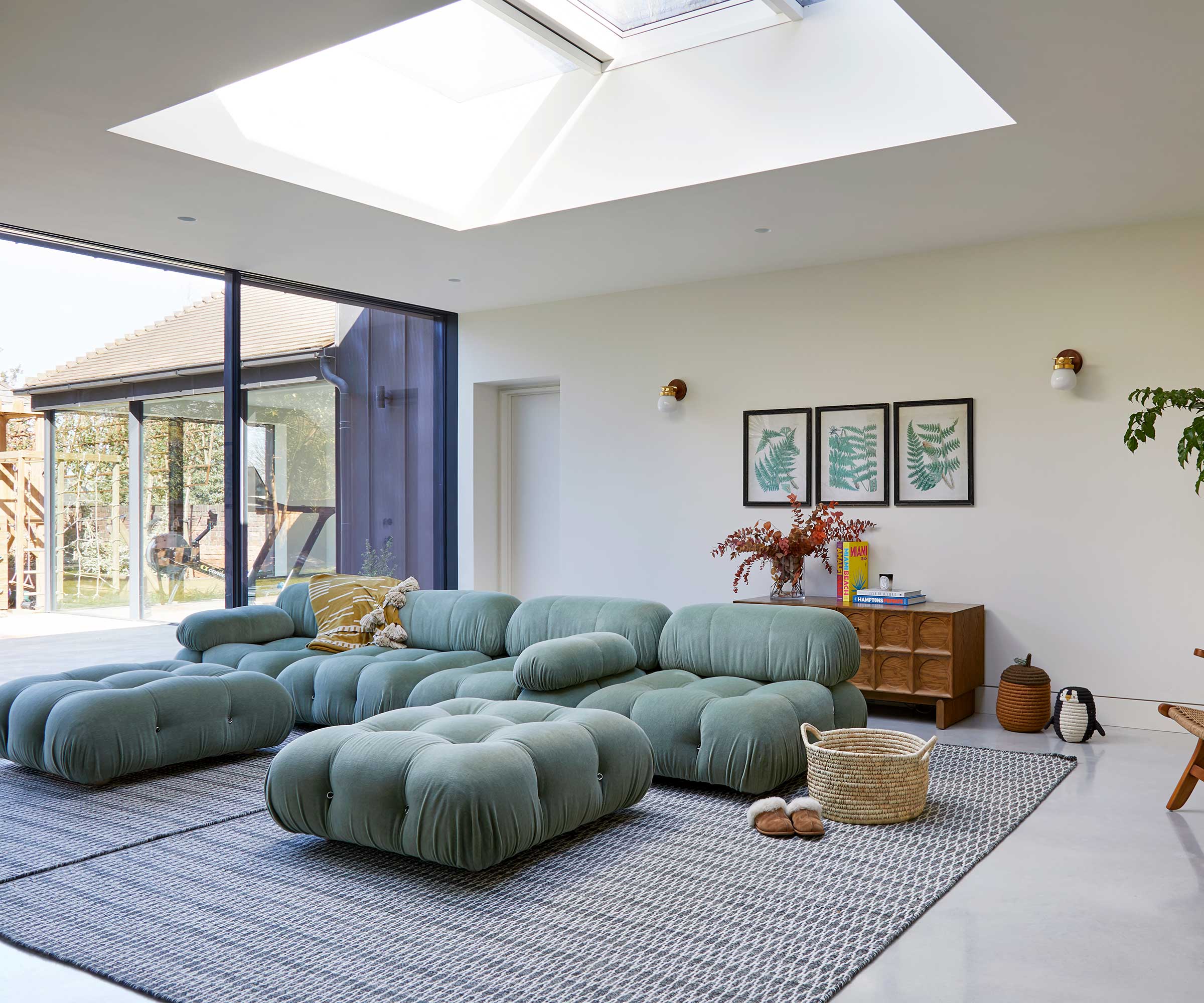
It isn't just vertical windows that work to bring light streaming into a living room – roof windows are another fantastic vehicle for this.
Roof lanterns and skylights bring a very clear, pure and bright light into any space they are fitted into. In addition, they avoid any issues with overlooking and can be angled to avoid overheating too.
In this fresh, breezy living room, designed by Fiona Duke Interiors, a roof lantern has been carefully positioned over the seating area to create a central sun trap. This, in conjunction with the glazed patio doors, has resulted in a space that is filled to the brim with natural light.
5. Use a picture window to frame a view
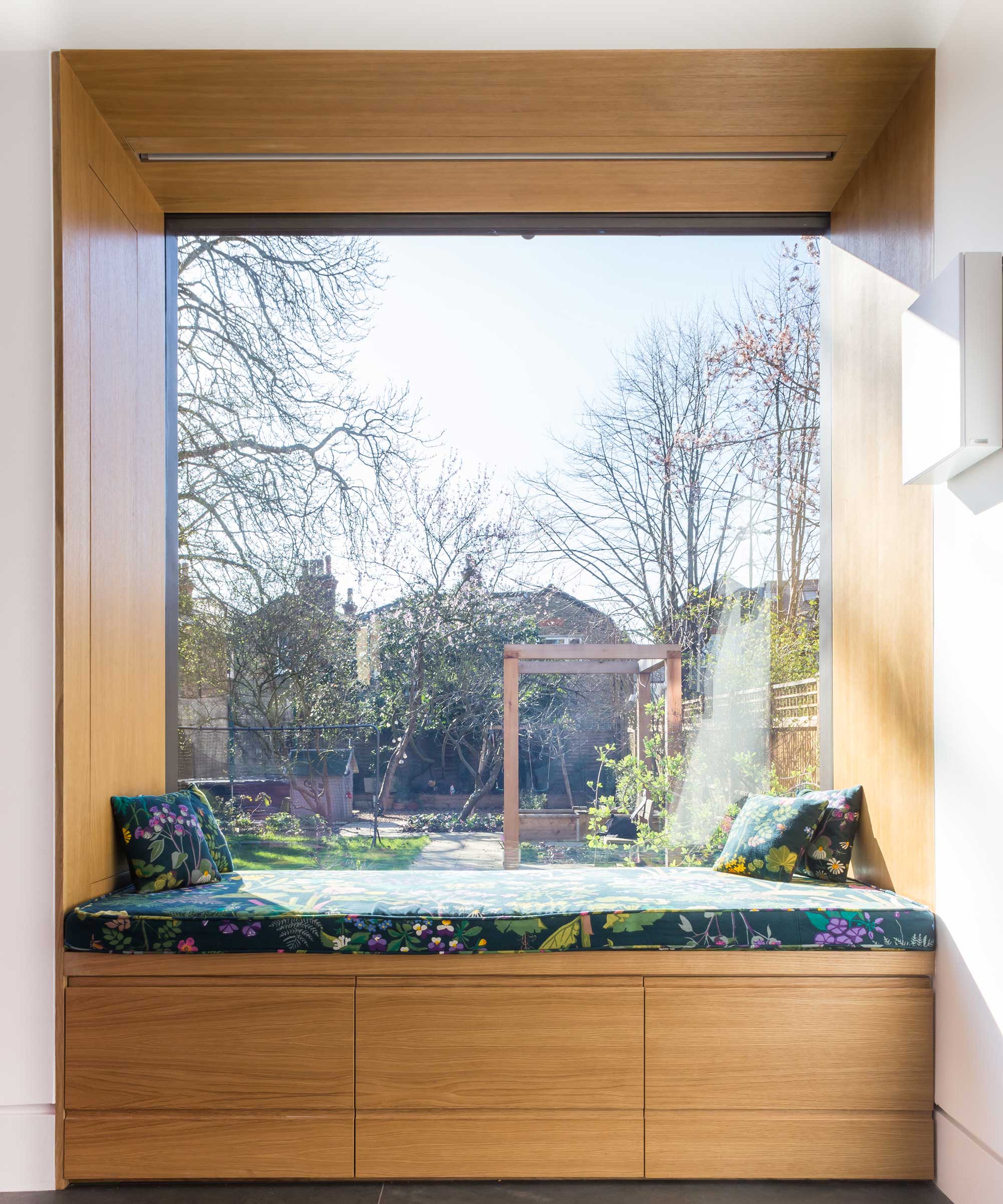
Picture windows are a huge trend right now. These large, fixed glazed apertures are the perfect way to make the most of a favourite view. They also work really well when set within deep reveals, offering the chance to create a quiet seating nook.
In the case of this example, the design of the window makes it possible to enjoy plenty of natural light, all while ensuring there are no issues with overheating or forgoing privacy thanks to the way in which it is set away from the room itself.
Note, too, how the window, with its built-in seating, also adds to the storage capabilities of the room.
6. Choose finishes to maximise light
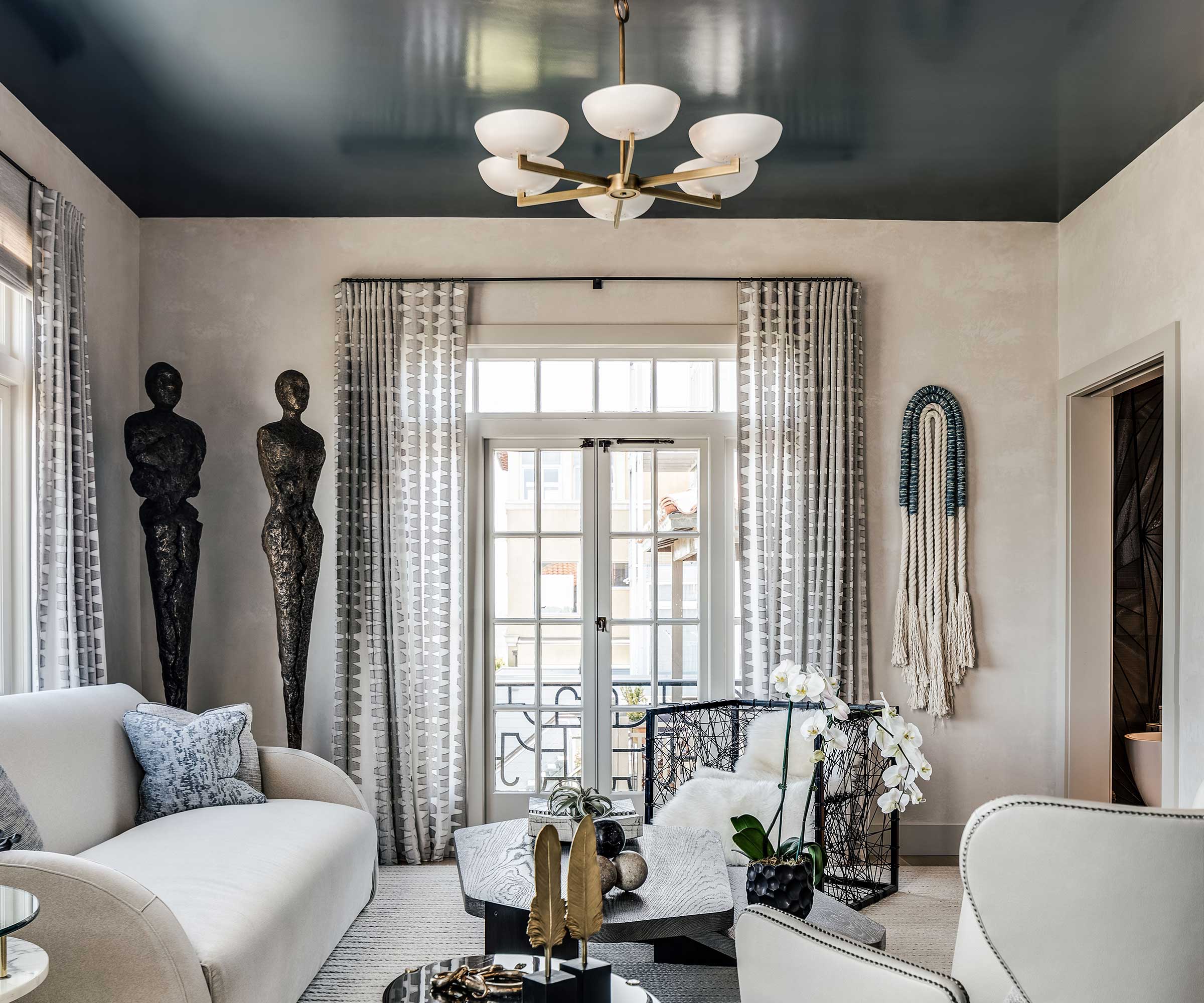
If you have large windows, you really want to ensure your living room design makes the most of all that natural light they will pull in.
Everything from the colours you choose for your walls, to the flooring you opt for and even the way in which you lay your furniture out will have an effect here.
While paler colours are known for their ability to help bounce light around a space, don't discount deeper shades altogether. Take inspiration from this scheme, by Tineke Triggs, in which the ceiling has been painted a rich, glossy blue in order to reflect the natural light coming in from the elegant French doors with sidelights and fanlights and draw attention to the striking light fitting.
7. Use the window as an extra seating spot
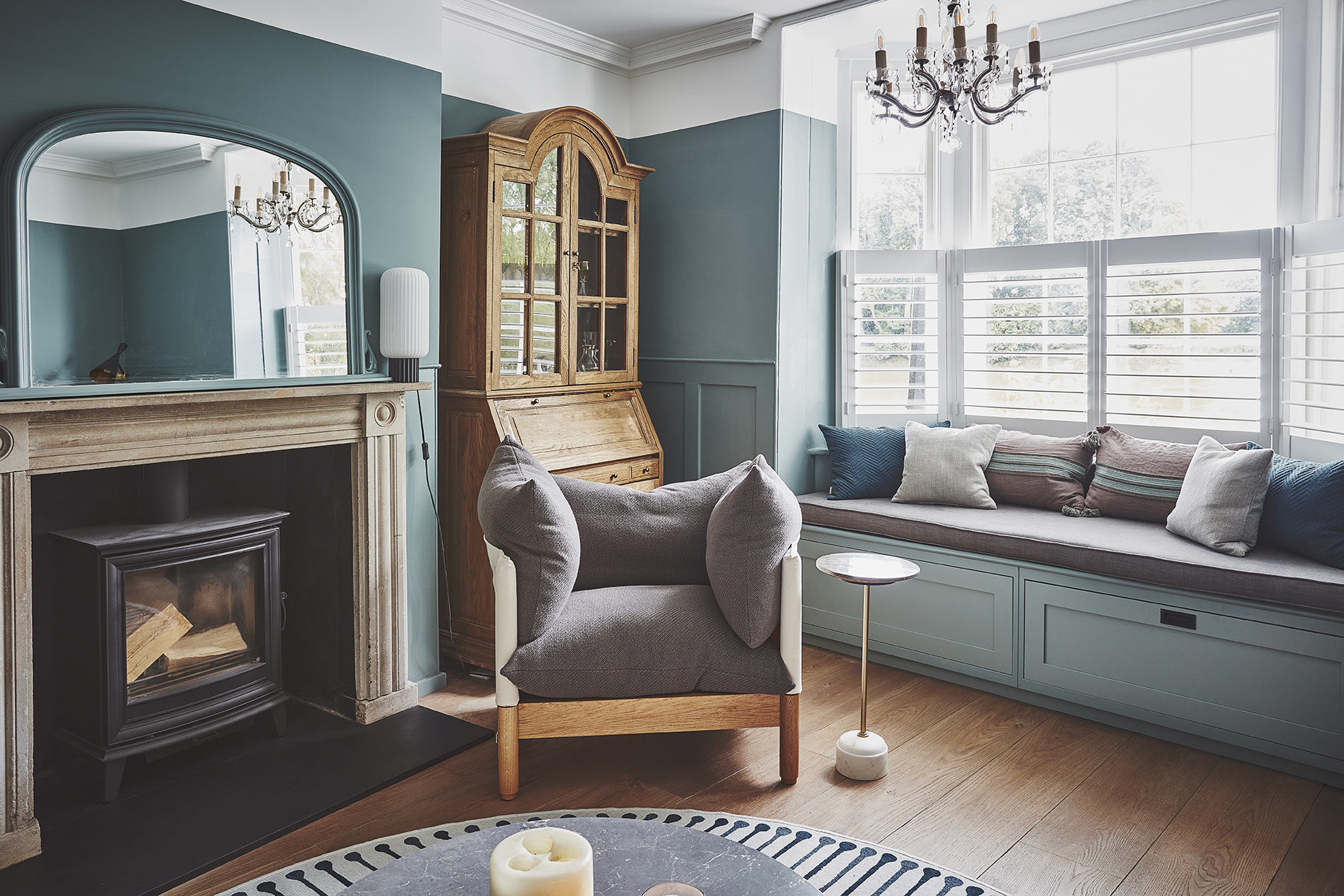
If you are struggling to find a way to incorporate enough seating into your living room, a large window could be the solution – the ideal place for a built-in spot to perch in the form of window seat ideas.
“Window seats have become hugely popular and are ideal for making the view out seem more artistic," explains Edward Stobart. "Being closer to the glass allows you to take more of the view in because you see less of the room itself.”
The bay window in this living room, within a project by The Vawdrey House, features a seat with built-in storage, while wooden shutters help control light levels.
8. Make the view the focal point
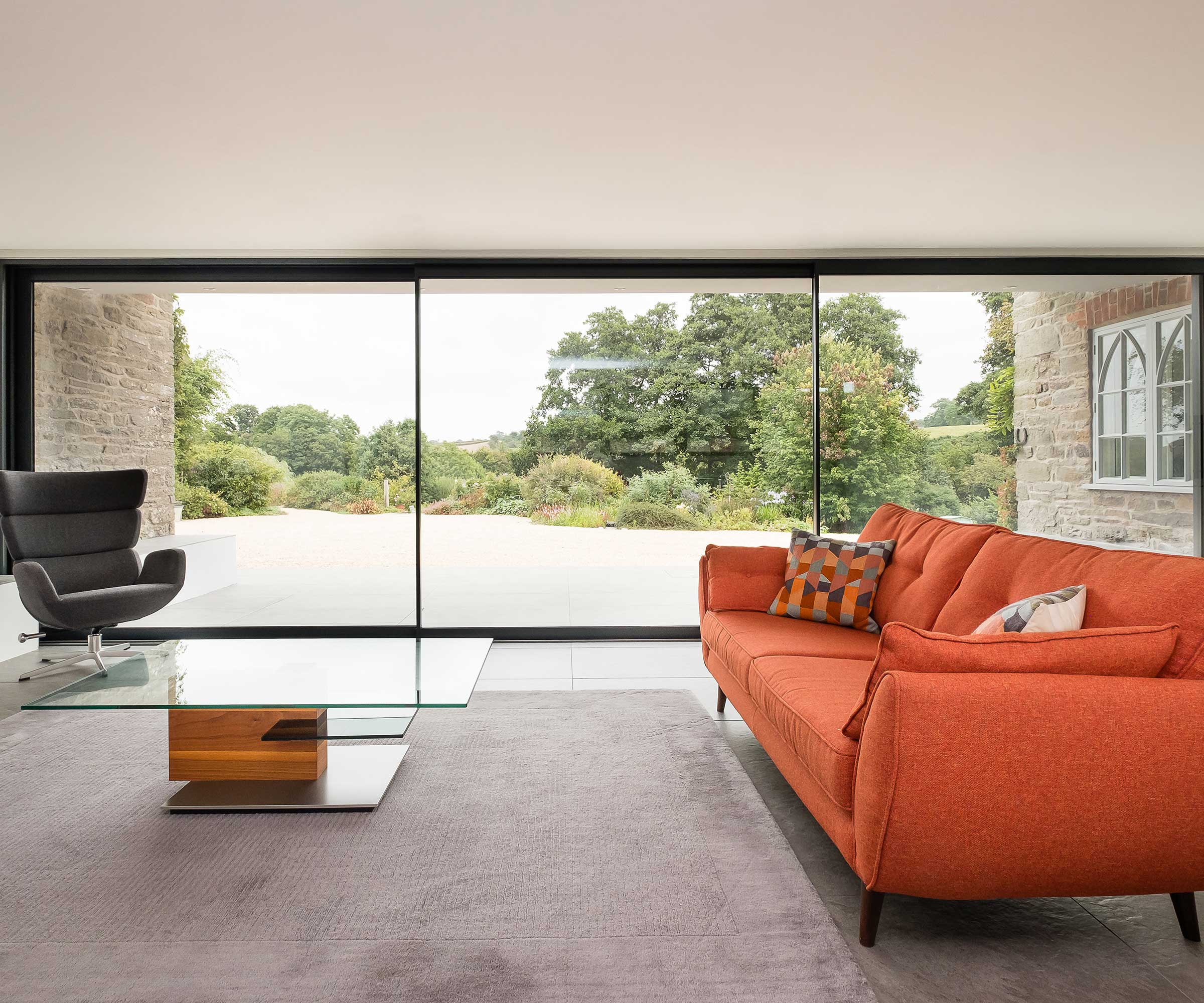
If you are after modern living room ideas and are keen to keep your scheme unfussy and minimalist, you might be worried about how to ensure the space still feels interesting.
If you have a great view from your living room, this, in itself, can become the crowning glory, given the right treatment. Keep frames slimline and free from curtains or blinds that might interfere with your vista. It also makes sense to consider how these windows open to create a greater connection with your outdoor spaces.
"Incorporating windows that can open widely allows for better ventilation and a seamless blend between the interior and exterior environments," explains Edward Stobart. "Additionally, glazing solutions such as bifold doors provide expansive views and the flexibility to open up entire walls to the outside, flooding homes with natural light and creating a more harmonious living space.”
9. Reflect you view within your interior design
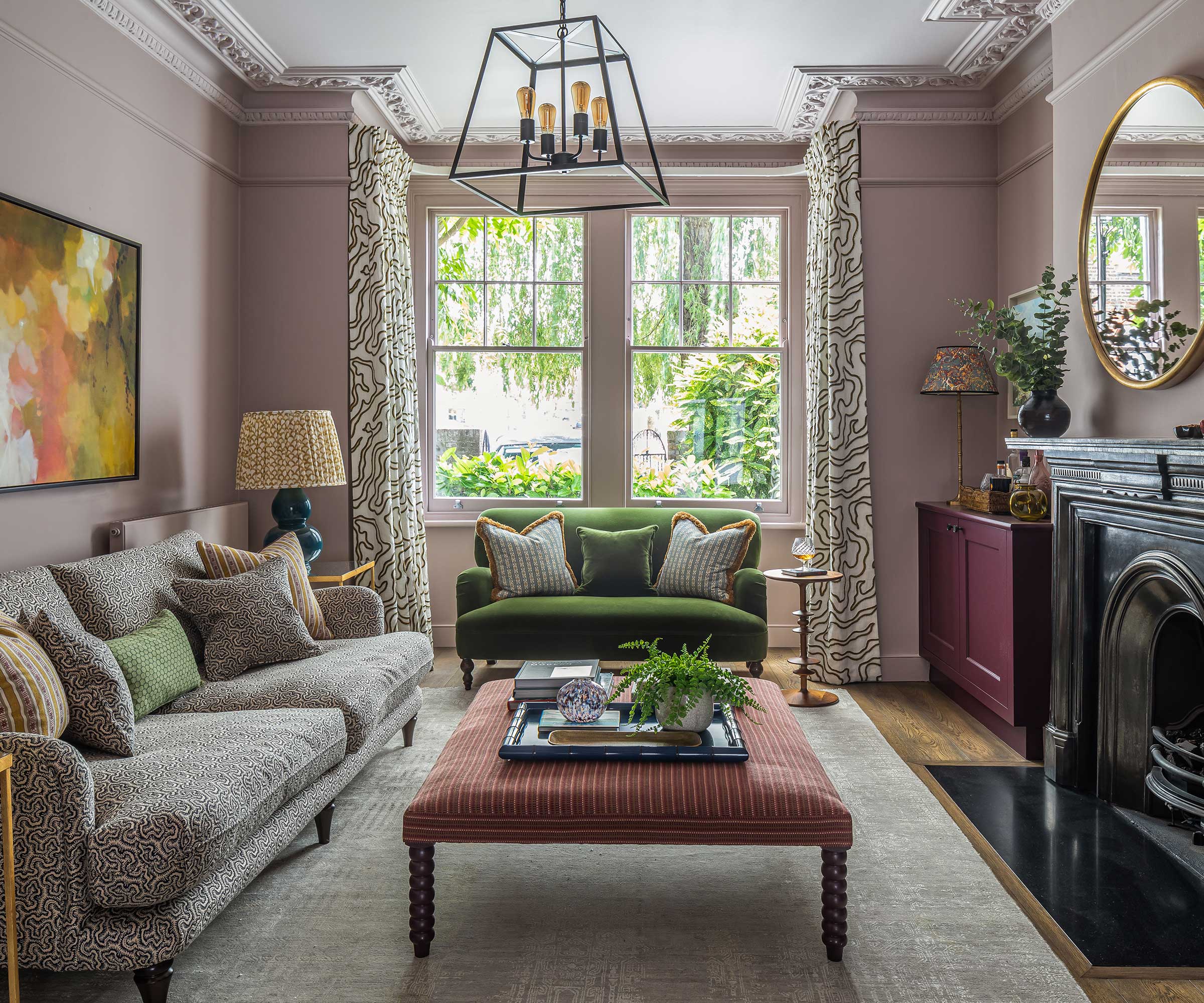
Taking the view afforded by your large windows and using it as the inspiration for your interior design scheme really helps unite your indoor and outdoor spaces – plus it helps narrow things down when looking at what the best colour for a living room like your's will be.
In this scheme, by Otta Design, the lush greenery beyond the window has been reflected within the design of the curtains, upholstery and decorative details, really drawing attention to the opening. There are other ways to highlight a large window too.
"Don’t forget the little details to really make the most of the windows," says Debbie Leigh. "Oversized curtain rods, floor-to-ceiling curtains and statement tiebacks can all help to turn big, beautiful windows into a true focal point."
10. Take control over light levels
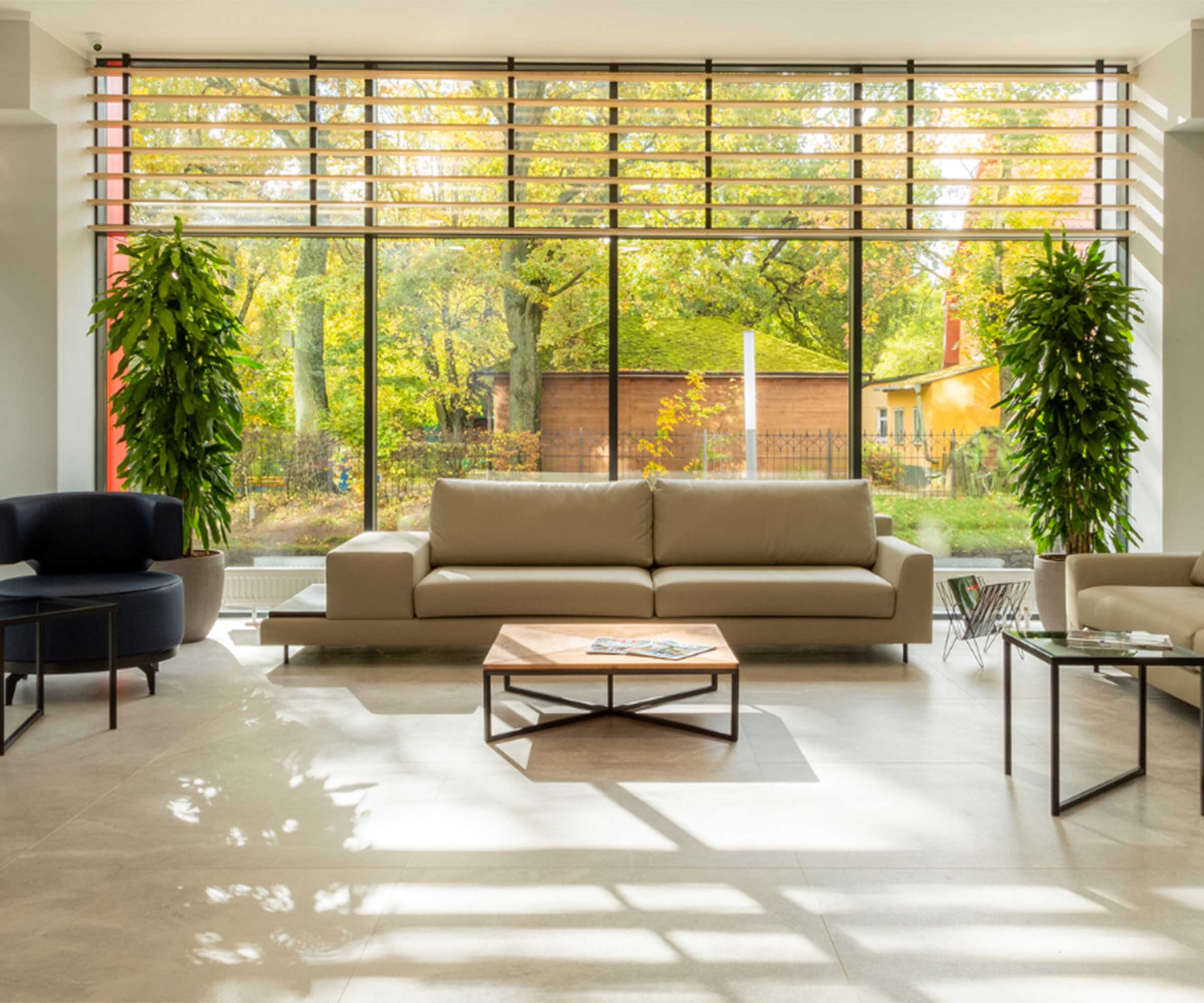
If you love the idea of huge windows but are worried about how you will adjust light levels when needed, fear not, there are plenty of options that work just as well in this space as they would for bedroom window ideas.
"Shutters are a perfect way to let in natural light while maintaining privacy," advises Rachel Binks, stylist at Hillarys. "With adjustable louvres, you can control the amount of sunlight that enters your room throughout the day.
Rachel goes on to explain how automated blinds can also help here.
"With the touch of a button or through your own automated schedules, you can adjust your blinds to let the perfect amount of sunlight in during the morning, and ensure a soft, dimmed atmosphere in the evening."
Combining more than one type of window treatment is also highly advisable, for a more flexible approach.
"Layering is the key," says Debbie Leigh. "Sheer, lightweight fabrics like linen or voile will help to soften harsh sunlight while still keeping the space lovely, bright and airy. You may also wish to consider pairing them with heavier drapes in natural textures, such as cotton, wool, or even a soft velvet, which will add warmth to the room and privacy when you need it."
FAQs
How to arrange furniture in a living room with large windows?
There are a couple of things to think about when it comes to living room layout ideas with large windows. For all their benefits, enormous glazed openings do mean less solid wall space on which to locate shelving or push larger items such as sofas up against.
This is where it pays to remember that furniture doesn't have to be located up against a wall – often, grouping seating more centrally, facing inwards, results in a more sociable space. With all those large windows, it is better to position seating to face towards them in order to take advantage of the views they have made possible too.
Where there are no windows, pop items like consoles, dainty chairs or storage.
And, finally, if your heating is supplied via radiators, choose long, low designs that can slot beneath windows or, alternatively, use slim, vertical models.
Once night falls, you'll be relying on artificial lighting to illuminate your living space so make sure you have given due consideration to your living room lighting ideas to ensure it is just as well lit after sunset as it is all day long.
Get the Homebuilding & Renovating Newsletter
Bring your dream home to life with expert advice, how to guides and design inspiration. Sign up for our newsletter and get two free tickets to a Homebuilding & Renovating Show near you.
Natasha was Homebuilding & Renovating’s Associate Content Editor and was a member of the Homebuilding team for over two decades. In her role on Homebuilding & Renovating she imparted her knowledge on a wide range of renovation topics, from window condensation to renovating bathrooms, to removing walls and adding an extension. She continues to write for Homebuilding on these topics, and more. An experienced journalist and renovation expert, she also writes for a number of other homes titles, including Homes & Gardens and Ideal Homes. Over the years Natasha has renovated and carried out a side extension to a Victorian terrace. She is currently living in the rural Edwardian cottage she renovated and extended on a largely DIY basis, living on site for the duration of the project.

